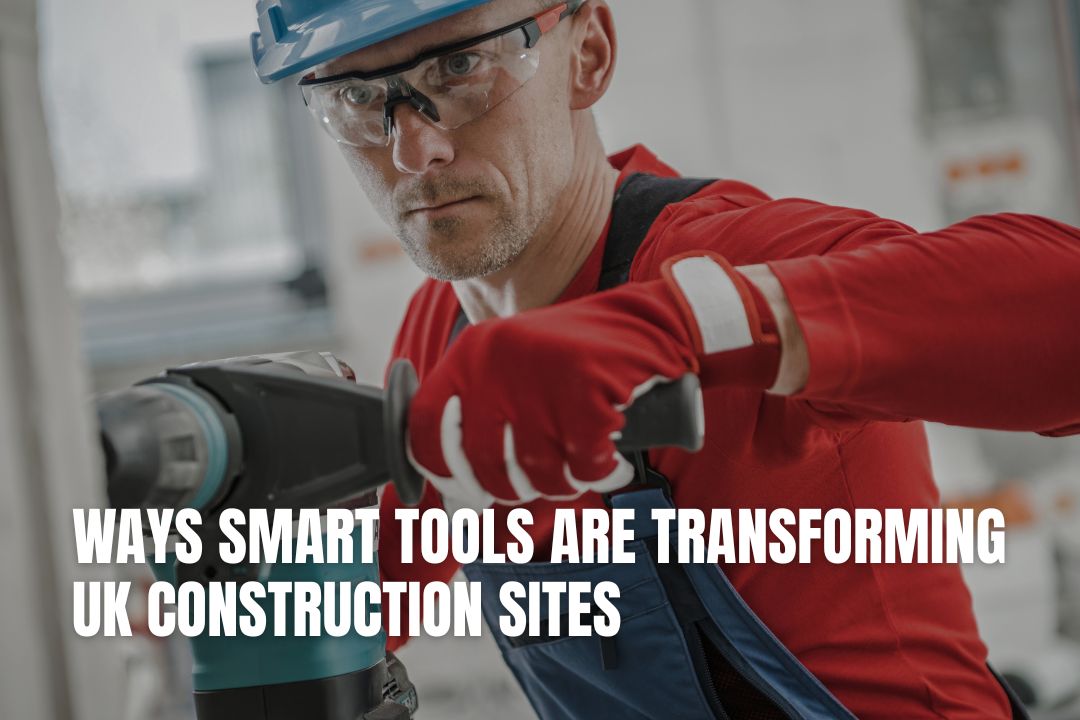
The UK construction industry has always relied on skilled labour and efficient processes to deliver projects on time and within budget. However, the rise of smart tools and technology is reshaping how construction sites operate, improving productivity, safety and accuracy. From wearable devices to automated machinery, these innovations are helping contractors and workers achieve more than ever before.
One of the most significant impacts of smart tools on UK construction sites is the improvement of safety standards. Wearable technology, such as smart helmets, vests and wristbands, can monitor workers’ vital signs, detect falls and alert site managers to potential hazards in real time. This technology helps reduce accidents and ensures immediate responses when incidents occur.
For instance, smart helmets equipped with sensors can detect fatigue or exposure to dangerous gases, sending instant alerts to prevent injuries. Similarly, wearable GPS trackers allow site managers to monitor worker locations, ensuring that no one enters high-risk zones without proper safety measures. By integrating these smart tools, construction companies are not only complying with health and safety regulations but also creating safer working environments for their teams.
Automation is another area where smart tools are transforming construction. Drones, robotic arms and autonomous vehicles are now used to perform repetitive or dangerous tasks, increasing efficiency and precision. Drones, for example, can conduct aerial surveys and monitor site progress, providing accurate data without the need for workers to climb scaffolding or inspect hazardous areas.
Robotic machinery can carry out tasks such as bricklaying, welding and concrete pouring with remarkable accuracy, reducing human error and speeding up project timelines. This automation allows construction teams to focus on more complex, creative and value-added tasks while machines handle the labour-intensive work.
The integration of digital tools into project management systems is streamlining operations on UK construction sites. Building information modelling (BIM) software, for example, allows teams to create detailed 3D models of a building before construction begins. These models help identify potential design flaws, plan material usage, and coordinate between different trades.
Smart tools connected to these digital systems provide real-time updates on inventory, task completion and worker allocation. This integration reduces delays, minimises waste and ensures projects remain on schedule. With digital project management, communication between teams is smoother, enabling faster decision-making and fewer costly errors.
Construction sites often struggle with managing tools, materials and equipment efficiently. Smart tools equipped with RFID tags or Bluetooth tracking can monitor the location and usage of equipment, reducing loss and theft. Similarly, inventory management systems can automatically reorder supplies when stocks run low, preventing costly downtime.
In addition to digital tracking, the availability of high-quality fasteners, fixings and tools ensures that teams have reliable equipment for every task. By combining smart tracking technology with dependable products, construction projects can maintain momentum and avoid unnecessary interruptions.
Sustainability is becoming a priority for UK construction, and smart tools are playing a crucial role. Energy-efficient machinery, smart lighting and environmentally friendly material monitoring help reduce carbon footprints on site. Sensors can track energy usage, optimise machinery operation and minimise waste, supporting greener construction practices.
Moreover, smart tools can facilitate recycling and repurposing of materials by providing detailed insights into the quantities and types of materials used, helping construction firms meet regulatory requirements and contribute to environmental conservation.
Smart tools enhance safety through wearable technology. For instance, smart helmets can monitor a worker for fatigue, while GPS trackers ensure no one enters a high-risk area without authorisation. These devices provide real-time data, allowing you to prevent accidents before they occur and respond instantly if they do.
No, the goal is not replacement but collaboration. Automation handles dangerous, repetitive, or physically demanding tasks like welding or aerial surveying. This frees up your skilled workers to apply their expertise to more complex and creative problem-solving, increasing overall productivity and job satisfaction.
Building Information Modelling (BIM) is a digital process that allows you to create and manage a 3D model of your construction project. It's important because it helps you identify potential design clashes, plan material usage accurately, and improve coordination between different teams before any physical work begins, saving you time and money.
You can manage equipment far more effectively by attaching smart tags (like RFID or Bluetooth) to your tools. This allows you to track their location and usage in real time, which drastically reduces the chances of loss or theft. It ensures the right tools are always available where they are needed.
While there can be an initial learning curve, many smart tools are designed for user-friendly integration. Starting with a specific area, like safety wearables or tool tracking, can make the transition smoother. For guidance on integrating new systems, business coaching services from firms like Robin Waite Limited can provide a clear strategy.